 W
WAncistrus cirrhosus, the Jumbie teta, is a species of armored catfish found in the Paraná River basin of Argentina and Uruguay. This species grows to a length of 8.9 centimetres (3.5 in) SL.
 W
WThe Argentine angelshark is an angelshark of the family Squatinidae.
 W
WThe Buenos Aires tetra is a tropical fish from South America. It was first observed in the wild in 1907, by Carl H. Eigenmann.
 W
WThe narrowmouthed catshark is a catshark of the family Scyliorhinidae, found from central Chile around the Straits of Magellan, to Argentina between latitudes 23° S and 56° S, at depths down to about 180 m (600 ft) in the Atlantic Ocean and about 360 m (1,200 ft) in the Pacific. It can grow to a length of up to 70 cm (28 in). The reproduction of this catshark is oviparous.
 W
WDiplomystes is a genus of velvet catfishes, a primitive family of catfishes endemic to Chile.
 W
WThe graytail skate, or gray tail skate, is a large species of skate in the family Arhynchobatidae, native to the south-western Atlantic Ocean and south-eastern Pacific Ocean. It is listed as endangered by the IUCN. It was caught as part of a commercial fishery around the Falkland Islands and is a bycatch in several other fisheries.
 W
WThe Argentine hake is a merluccid hake of the genus Merluccius, found in the southwestern Atlantic Ocean, along the coast of Argentina, and Uruguay. This fish was described by an Argentine ichthyologist, Tomás Marini in 1933.
 W
WOdontesthes bonariensis is a species of Neotropical silverside, an euryhaline fish native to fresh, brackish and salt water in south-central and southeastern South America, but also introduced elsewhere. It is often known by the common name Argentinian silverside or pejerrey, but it is not the only species of silverside in Argentina and pejerrey is also used for many other silversides. It is a commercially important species and the target of major fisheries.
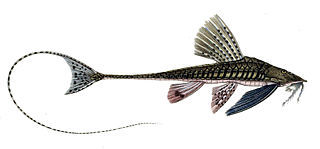 W
WParaloricaria vetula is a species of armored catfish found in the La Plata Basin of Argentina, Brazil and Uruguay. This species grows to a length of 55.4 centimetres (21.8 in) TL.
 W
WPseudoplatystoma is a genus of several South American catfish species of family Pimelodidae. The species are known by a number of different common names. They typically inhabit major rivers where they prefer the main channels and tend to stay at maximum depth, but some species can also be seen in lakes, flooded forests, and other freshwater habitats. They have robust bodies, and are important food fish. Recently, their population size has been on the drastic decline due to a variety of factors including overfishing and habitat destruction due to the construction of hydroelectric dams.
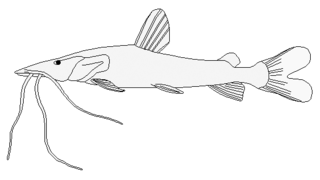 W
WPseudoplatystoma corruscans, the spotted sorubim, is a species of long-whiskered catfish native to the São Francisco and Paraná—Paraguay River basins in South America. This species grows to a length of 166 centimetres (65 in) TL.
 W
WThe apron ray is a small electric ray in the numbfish family, Narcinidae, known for being able to generate electric shocks for defense. It is one of two species in the genus Discopyge.
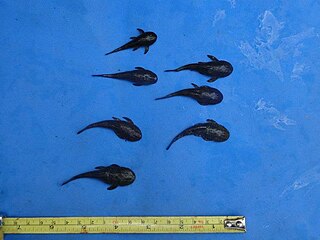 W
WRhinelepis aspera is a species of armored catfish native to Argentina, Brazil, and Uruguay, where it occurs in the São Francisco and upper Paraná River basins. This species grows to a length of 33 centimetres (13 in) TL.
 W
WThe ringneck blenny is a species of combtooth blenny widespread in coastal waters of Eastern Atlantic from Spain and Portugal to Möwe Bay, Namibia, in the Mediterranean Sea from Morocco, Algeria, Spain. In the Southwest Atlantic it is found near Brazil and Patagonia, Argentina. Also in Western Indian Ocean from Natal to Knysna in South Africa. This species reaches a length of 12.7 centimetres (5.0 in) SL. It is the type species of the genus Parablennius
 W
WSalilota australis, the Patagonian cod or tadpole codling, is a species of morid cod found in the waters around the southern tip of South America and the Falkland Islands. It occurs at depths from 30 to 1,000 m and is of minor importance to local commercial fisheries. This species grows to 50 cm (20 in) in total length.
 W
WSalminus brasiliensis is a large, predatory characiform freshwater fish found in central and east-central South America. Despite having Salminus in its name, the dorado is not related to any species of salmon, nor to the saltwater fish also called dorado. It is very popular among recreational anglers and supports large commercial fisheries.
 W
WTetronarce is a genus of rays, commonly known as electric rays. They are slow-moving bottom-dwellers capable of generating electricity as a defense and feeding mechanism. Tetronarce species tend to attain a much larger size than Torpedo species, which are usually small to moderate sized electric rays.
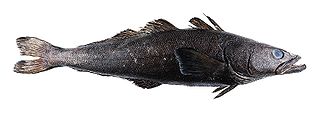 W
WThe Patagonian toothfish is a species of notothen found in cold waters between depths of 45 and 3,850 m in the southern Atlantic, Pacific, and Indian Oceans and Southern Ocean on seamounts and continental shelves around most Subantarctic islands.
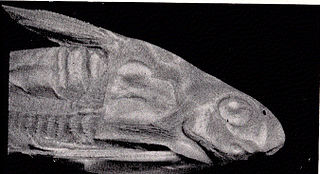 W
WTrachydoras paraguayensis is a species of thorny catfish found in the Paraná River basin of Argentina, Bolivia, Brazil and Paraguay. This species grows to a length of 10.4 centimetres (4.1 in) SL.